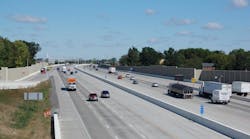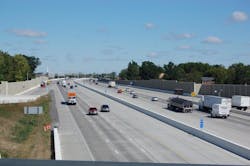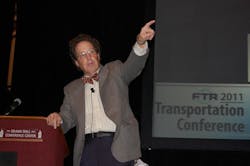This year is no exception, as FTR and a variety of experts – especially economists – shed some light on the many challenges facing the trucking, rail, intermodal, air, and marine freight industries.
One of the interesting things FTR – which by way has dropped the “Associates” from its name and is about launch a new web site, www.ftrintel.com – tries to do at its annual outlook meeting is to explain how federal and state policy initiatives, along with broader economic trends, affect transportation either directly or indirectly.
“We go where the data takes us,” is what Eric Starks, FTR’s president, told me this week. “And it’s also important to understand that when we use the word ‘risk’ it’s not always in the negative sense. Often there’s what we call an ‘upside risk’ to our forecasts, where things do better than what we projected.”
And he stressed that such “upside” risk can affect transportation businesses just as powerfully as downside risk, as any “extreme” shift in business activity can cause headaches in the freight industry.One of the more potent risks now coming to the fore in trucking – and this one is definitely in the “negative” category – revolves around the potential impact of higher taxes, and it’s not pretty.
Noel Perry (seen at right) – the former chief economist for Schneider National who now runs his own research business as president of Transport Fundamentals while also serving as FTR’s senior consultant – provided some surprising thoughts on how just how large the tax burden on trucking might become in the years ahead due to a variety of what one would think to be unrelated issues.
“Rising budget deficits at the federal and state level may mean higher taxes and if government wants better infrastructure, that also will result in taxes – with trucking getting hit with about half of the bill,” he said during a broad presentation about the challenges facing carriers over the next several years.Perry explained that the reason trucking’s tax burden may increase significantly is tied directly to the often negative view of the industry shared by many on both sides of the political aisle as well as the general public.
“The public just doesn’t like trucks – they don’t,” he noted. “That’s why highway safety is such a popular bipartisan issue on Capitol Hill; car drivers just don’t like trucks.”
Put in trucking terms, then, the current level of taxes borne by the industry equates to roughly 5 cents per mile, Perry explained. “Now, if taxes to help pay for infrastructure get added in, that equates to a further 6 cents per mile," he said.
Perry also thinks that the imposition of ObamaCare is expected to add some 2 cents per mile to trucking’s tax portfolio, but if the U.S. eventually moves to a universal, single-payer government-sponsored health insurance system for all Americans – a move Perry believes is more likely than not within 15 years or so – that will add another 10 cents per mile to trucking’s tax burden.
And such a scenario is not as farfetched as one might think, Perry pointed out. “Right now, more than 50% of Americans get their health care paid for by the government, either through Medicare, Medicaid, the U.S, military, or via jobs in local, state, or federal government agencies,” he stressed. “So we’re closer to universal care than you think.”
Finally, there’s the possibility that the federal government could create a value added tax or “VAT” slapped on the purchase price of all goods sold in this country as a way to pay off the nearly $17 trillion in debt held by the federal government.
Putting together the infrastructure, universal health care, and VAT taxes, then would equate to a 25 cents per mile burden on the trucking industry – a cost more than likely to be passed on in some fashion to shippers who then in turn would pass it on to consumers.
“This is of course a ‘worst case’ tax scenario,” Perry cautioned. “But more than likely the trucking industry will face some piece of it; especially as every other developed economy in Europe is using a VAT to help address deficits.”
In Perry’s estimation, trucking should see an extra 5 to 8 cents per mile added to the industry’s tax bill within in the next three to five years, mainly to address infrastructure funding and health care costs.
Not exactly happy news, but it’s something trucking needs to work into its strategic thinking as the industry prepares for what could be some interesting years ahead.






